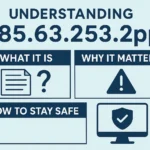In today’s fast-paced digital world, the exchange of data—whether through wireless communication, online platforms, or embedded systems—must be efficient, accurate, and secure. One of the lesser-known but important tools in this process is the CSR decoder. Though it may sound highly technical, a CSR decoder plays a crucial role in decoding encoded data, especially within certain digital and hardware communication protocols.
This article breaks down what a CSR decoder is, how it functions, its applications in real-world systems, and why it matters in fields like telecommunications, embedded systems, and data security.
What Is a CSR Decoder?
To understand a CSR decoder, we first need to define the acronym CSR, which can vary depending on context. In many digital electronics and embedded systems settings, CSR stands for Control and Status Register.
A CSR decoder, in this context, is a hardware or software logic block that interprets or decodes access requests to control and status registers in a digital system. These registers are essential for controlling hardware peripherals and monitoring their state.
Think of the CSR decoder as a translator between the system’s processing unit (CPU) and its various control mechanisms. Whenever the CPU wants to check a device’s status or change a setting, it sends a signal. The CSR decoder reads this signal and routes it to the correct register.
Key Functions of a CSR Decoder
A CSR decoder is typically implemented in digital logic (e.g., in FPGAs or ASICs) and has several core functions:
- Address Decoding:
The decoder checks whether an incoming address (from the CPU or a bus) matches one of the control/status registers. - Signal Routing:
Once a match is found, the decoder enables the specific register for read or write operations. - Data Handling:
It facilitates the transfer of control data (e.g., turning a device on/off) or status data (e.g., error flags, readiness signals). - Access Control:
In more secure or complex systems, the decoder may include permission logic, ensuring only authorized components can access certain registers.
Why Are CSR Decoders Important?
While they operate in the background, CSR decoders are essential for:
- Embedded hardware control: Allowing microcontrollers or processors to interact with peripherals.
- System efficiency: Ensuring correct and fast communication between software and hardware layers.
- Debugging and diagnostics: Providing access to key system statuses for developers and engineers.
- Security enforcement: Controlling access to critical configuration settings.
In summary, without CSR decoders, hardware systems would struggle to function reliably or efficiently.
Real-World Applications of CSR Decoders
CSR decoders are embedded in many common devices and platforms, including:
- Microcontroller Units (MCUs): In systems like Arduino or STM32, CSR decoders allow programmatic control over GPIOs, timers, communication interfaces, etc.
- System-on-Chips (SoCs): Used in smartphones, tablets, and smart TVs to manage internal communications.
- Networking Equipment: Routers and switches use CSR decoding to manage data flows and error checking.
- FPGA-Based Designs: Developers use HDL (Hardware Description Language) to implement CSR decoders for custom peripheral control.
Even cloud data centers and high-performance computing systems depend on CSR decoding mechanisms to manage complex operations across multiple processors and devices.
Tools and Languages for Designing CSR Decoders
CSR decoders are typically implemented in HDL languages like:
- Verilog
- VHDL
These languages allow designers to define the behavior of digital circuits, including how the decoder should respond to different addresses and access signals.
Modern development tools like Xilinx Vivado, Intel Quartus, and Cadence provide frameworks to build and simulate CSR decoder logic.
Final Thoughts
The CSR decoder might not be the most glamorous component in a digital system, but it is absolutely vital. It ensures smooth and organized communication between processing cores and the devices they control. Whether you’re developing an embedded system, building custom hardware, or working in telecom and networking, understanding the role of a CSR decoder can significantly enhance your ability to design effective and reliable solutions.
In the complex world of digital communication, CSR decoders are the unsung heroes of control and stability.










